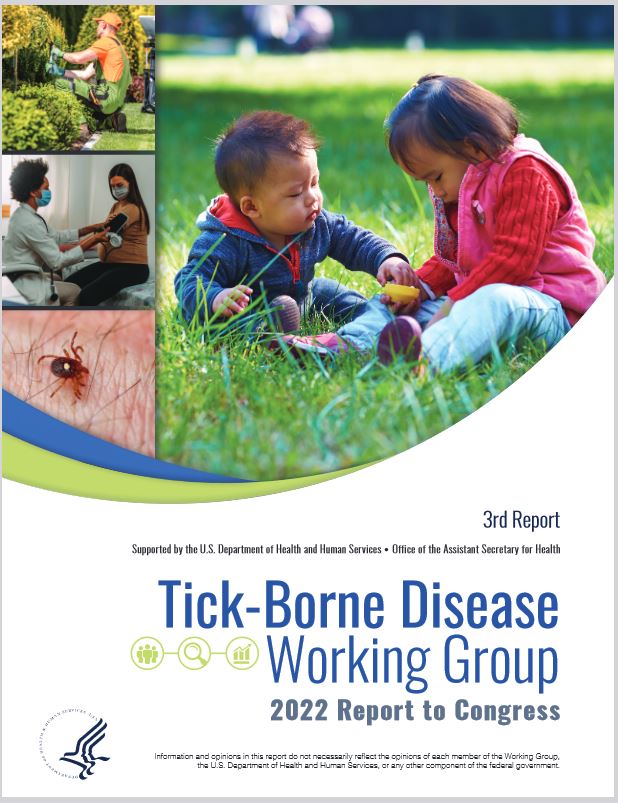Final TBD Working Group report reflects patient contributions

The third and final report of the Tick-Borne Disease Working Group has been submitted to Congress. You can access it here.
It’s the culmination of six years of public meetings regarding Lyme disease and other tick-related conditions—and what should be done about them.
When the Working Group was created by the 21st Century Cures Act in 2016, it notably called for the federal panel to include patient representatives.
This was a significant development. Prior to passage of this act, there were forces that worked hard to shut Lyme patients out of any such process. After a hard-fought battle, however, the Lyme community won the right to serve on the group, alongside federal health officials and academic researchers.
So, I’d like to point out some aspects of the report that simply wouldn’t even exist if the patient community had not made them happen.
Chapter 2
The chapter on public comment is a remarkable compilation.
Because the TBD Working Group was formed as a Federal Advisory Committee, it was legally required to allow public comment—and boy, did the Lyme community deliver! Patients, caregivers and advocates have been marginalized for years, and they took this opportunity to get their views on the record.
More than 2000 people emailed written comments to the Working Group over the six-year period, and more than 200 offered verbal comments during public meetings.
Working group staff counted, collated, and analyzed the content of those emails. (Alas, the verbal comments were not included in the analysis.)
As the chapter explains, the following themes were expressed most frequently and by a wide variety of commenters:
- Need for Clinical Education
- Feeling of Being Disregarded
- Frustration with the Use and Application of Diagnostic Criteria
- Clinical Reliance Upon Geographic Endemicity
- Personal Sacrifice and Loss
- Mental Health
- Ethical Lapses or Mishandling by Governmental Entities
- Vaccines
The chapter expands on each of these themes, giving examples of individual comments. I think the report does a good job of capturing the spirit of what people were trying to convey. Although all 2000+ can be read on the HHS website, few people are likely to do that. This summary of patient concerns gives an important window into the thoughts and priorities of the Lyme community.
Chapter 3
The “Access to Care and Education” chapter wouldn’t have happened without focused effort from the Lyme community. (This is indeed the core issue for Lyme patients. After all, if Lyme patients had easy access to appropriate medical care, there would be little need for the Working Group!)
This section deals with the challenges faced by Lyme patients trying to find suitable medical care. Among them: Problematic information about Lyme disease on the websites of the CDC and other federal health agencies. Lack of insurance coverage for Lyme treatment. The dearth of health providers who know how to recognize and treat Lyme-related conditions.
In discussing the scarcity of knowledgeable Lyme-treating doctors, the report cites data from LymeDisease.org’s 2021 survey of Lyme-treating practitioners. The only study of its kind, it highlights a number of structural and societal barriers that “complicate or preclude care for this marginalized patient group.”
The “major failing” of the Working Group?
In a minority response to the report’s final chapter “Conclusions and Moving Forward,” Dr. Elizabeth Maloney calls out what she considers the panel’s “major failing.” That’s the decision by the majority of panelists to not recommend renewing the Tick-Borne Disease Working Group, which by statute, ended in December of 2022.
“The work needed to achieve health equity for patients with tick-borne illnesses and associated illnesses is far from complete,” she writes. In her view, the panel’s structure as a Federal Advisory Committee—with its legal requirement to include public input and a range of viewpoints—allowed it to accomplish things that wouldn’t have otherwise happened. Including patient representatives at the table put them on an equal footing with others on the panel–allowing for more balanced discussions.
Dr. Maloney continues: “For many within the tick-borne disease community, the equality afforded to them by the Working Group structure and processes and the efforts at building consensus were laudable departures from the past. The community response to this successful forum has been to lobby for more tick-borne disease funding for NIH and CDC, and funding for these agencies has increased significantly as a result of these efforts.”
Click here to read Dr. Maloney’s complete minority response.
Click here to read the entire report.
TOUCHED BY LYME is written by Dorothy Kupcha Leland, President of LymeDisease.org. She is co-author of When Your Child Has Lyme Disease: A Parent’s Survival Guide. Contact her at dleland@lymedisease.org.




















We invite you to comment on our Facebook page.
Visit LymeDisease.org Facebook Page